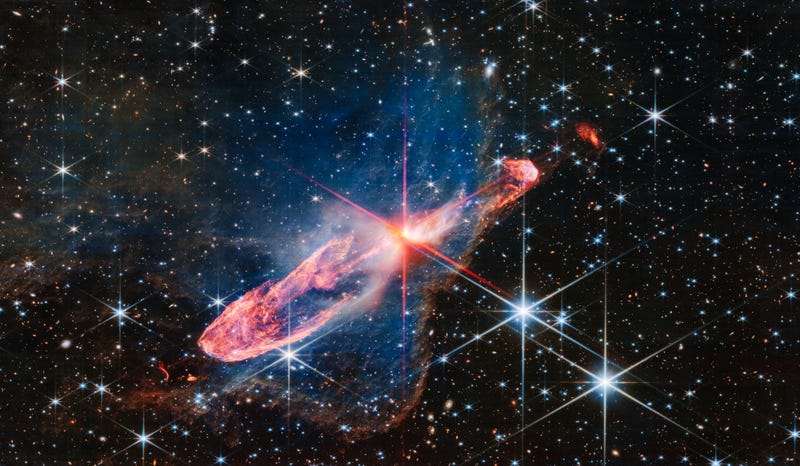
Though we all have differences, there’s one commonality that has prevailed for all of humanity: we are all floating on a rock, flying through outer space at over a million miles an hour.
Thanks to the rapid advancement of technology in the past century, we can observe much more of the Universe than we ever thought possible.
The scale and sheer size of the universe make it impossible to truly learn everything, but it doesn’t mean we shouldn’t try.
Here's what's happening in space this week.
NASA's James Webb Space Telescope has captured yet another breathtaking cosmic marvel just a few weeks after celebrating its first full year in operation.
Released early Wednesday, the telescope's latest image shows a chaotic yet beautiful scene of two young stars, known as Herbig-Haro 46/47, actively forming. The pair of stars exist relatively close to Earth at 1,470 light-years away in the Vela Constellation.
The image from Webb revealed multiple key components of star formation, which are represented in different colors. The stars themselves are located at the center of the red diffraction spikes within the image. Shrouded within a vast cloud of gas and dust, the pair of stars appear within the orange-white area in the center.
To the left and right of the stars are two massive 'lobes' represented in orange. These striking objects are comprised of residual material ejected during the process of star formation over the span of thousands of years. The 'thread-like' blue parts of the image represent material that was ejected from the stars more recently.
According to NASA, these plumes of ejected material are vital to the star formation process as ejections ultimately dictate how much material the stars will collect.
Another highlight of the image is the giant blue cloud surrounding the pair of stars. This region of dust and gas, known as both a nebula and a Bok globule, is only visible thanks to Webb's near-infrared instruments. Without them, the globule would appear almost completely black.
This globule is a crucial component of this system as it influences the shapes of the ejected material emitted from the stars. The presence of the nebula gives the ejected material more opportunity to interact with molecules as it slams into the nebula.
Herbig-Haro 46/47 is an important celestial object for astronomers to observe and study since it's only a few thousand years old. Systems like this take millions of year to form, which means researchers now have an opportunity to study the process of star formation in its earlier stages and how it progresses over time.
LISTEN on the Audacy App
Tell your Smart Speaker to "PLAY 1080 KRLD"
Sign Up to receive our KRLD Insider Newsletter for more news


